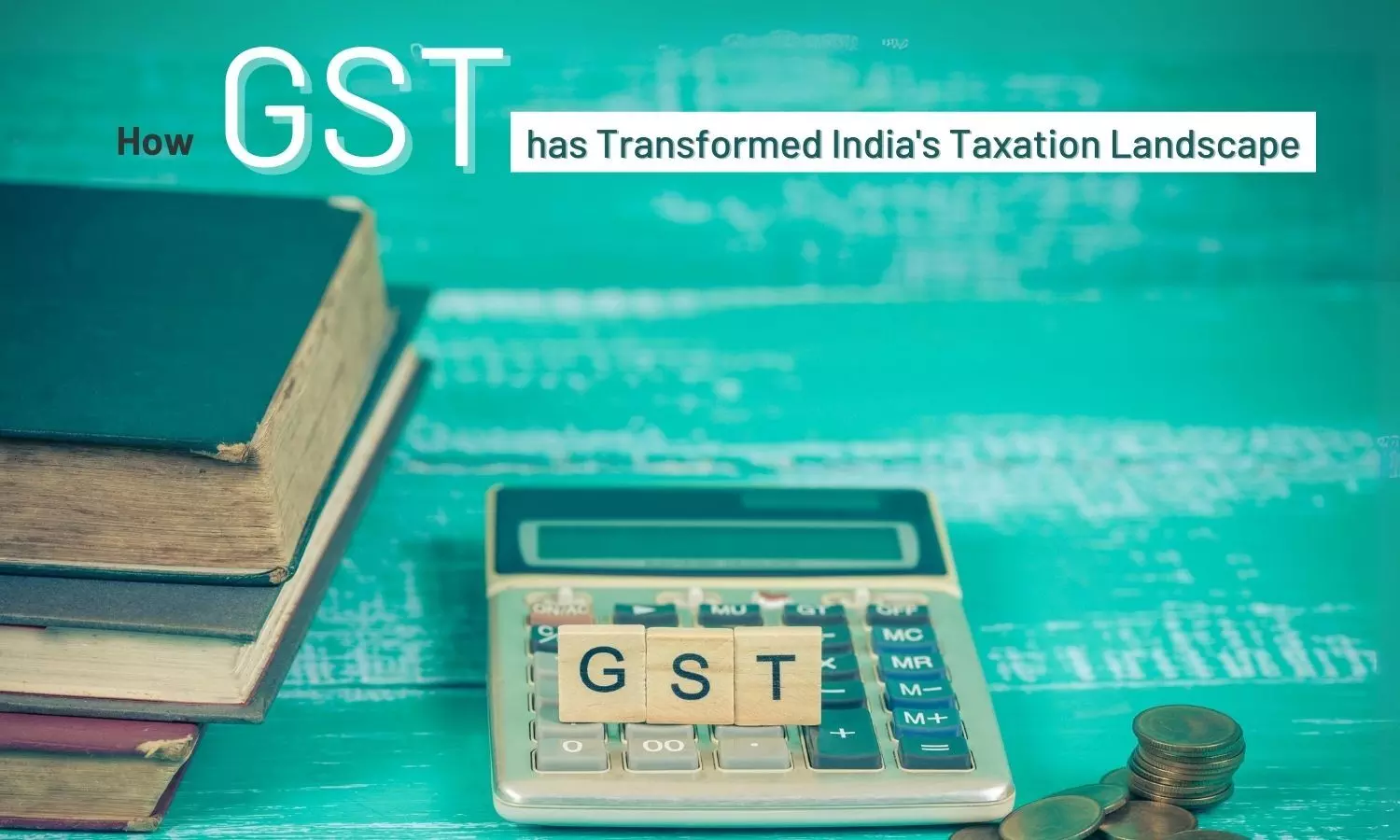How GST has Transformed India's Taxation Landscape: Key Impacts and Benefits
Learn how the Goods and Services Tax (GST) revolutionised India's taxation system, reducing prices, boosting transparency, and streamlining logistics while eliminating tax evasion and enhancing economic growth.
How GST has transformed India's taxation landscape: Key impacts and benefits

The Goods and Services Tax (GST) is widely considered the most significant indirect tax reform in India since independence. Implemented on July 1, 2017, GST has fundamentally reshaped the Indian taxation landscape, replacing a multitude of central and state taxes with a single, unified system. This comprehensive tax reform has brought about transparency, efficiency, and convenience, making it easier for businesses to comply with tax regulations and for the government to monitor and collect taxes effectively. By eliminating inefficiencies such as tax evasion and bribery, GST has boosted economic growth, increased government revenue, and contributed to overall societal well-being.
Elimination of the Cascading Tax Effect
One of the most notable advantages of GST is the elimination of the cascading tax effect, commonly referred to as "tax on tax." Under the previous system, taxes were levied on the total value of goods, including the taxes already paid at earlier stages. For instance, excise duties paid by manufacturers could not be offset against state-level VAT, leading to increased product prices. GST, being a value-added tax, ensures that the Input Tax Credit (ITC) is available at each stage of the supply chain, allowing businesses to claim credits for the taxes paid on inputs. This seamless flow of ITC from manufacturers to retailers reduces the overall tax burden, resulting in lower costs for consumers.
For example, if a manufacturer incurs a production cost of Rs. 500 and pays Rs. 60.50 in excise duties, the previous system would require VAT to be charged on the total of Rs. 560.50, leading to higher consumer prices. With GST, the cascading effect is eliminated, and VAT is only charged on the actual value added, making goods and services more affordable.
Control Over Prices
GST has contributed to a systematic reduction in consumer prices, reflected in the year-on-year consumer price index (CPI). Before GST, the CPI was over 6% in July 2016, but it fell to around 2% by January 2019. By eliminating the cascading effect and ensuring that the tax burden is evenly distributed across the supply chain, GST has stabilised prices, benefiting both businesses and consumers.
Empowered and Educated Consumers
Under the old tax regime, the multiplicity of taxes—such as VAT, service tax, luxury tax, excise duty, and others—created confusion and opacity. Consumers often found it difficult to understand the various tax components in their purchase bills, making it easy for businesses to overcharge or evade taxes. GST has simplified the tax structure by introducing a "One Nation, One Tax" system. This nationwide uniform tax has made it easier for consumers to understand and verify the taxes they pay, thereby enhancing transparency and consumer rights.
Reduction in Logistics Costs
GST has also had a transformative impact on the logistics sector. Previously, trucks and heavy transport vehicles faced numerous state border checkpoints, leading to long delays and increased transportation costs. The introduction of the E-way bill system under GST has streamlined the movement of goods across states. According to reports, trucks now cover 10-15% more distance per day compared to the pre-GST era, increasing from an average of 300-350 km per day to 400-410 km per day. This improvement in logistics efficiency has reduced the overall cost of transporting goods, benefiting businesses and consumers alike.
Additionally, the government is developing a National Logistics Portal to further streamline logistics operations. This digital platform will integrate stakeholders such as traders, manufacturers, logistics service providers, and government departments, aiming to reduce logistics costs from the current 14% of GDP to less than 10% by 2022.
Anti-Profiteering Measures
GST has implemented anti-profiteering measures to ensure that the benefits of reduced tax rates are passed on to consumers. Under these measures, businesses are required to reduce their prices in line with tax reductions. Profiteering occurs when businesses maintain the same price even after a reduction in tax rates, thereby increasing their profit margins. The government's anti-profiteering clause ensures that consumers benefit from lower prices and that businesses do not take undue advantage of GST reforms.
Impact on Real Estate
The real estate sector has seen significant changes under GST. Before GST, homebuyers had to pay multiple taxes, making real estate purchases expensive. The GST regime initially introduced a 12% tax rate (with ITC) and an 8% rate for affordable housing, but this has now been rationalised to 5% and 1% respectively (without ITC). This change has brought transparency and fairness to the real estate market, ensuring that consumers pay a realistic price without hidden tax costs.
Introduction of the E-Way Bill
The implementation of the E-way bill has been another major achievement of the GST regime. This electronic document is required for the transportation of goods valued at over INR 50,000 and captures crucial information about the origin and destination of goods, as well as their value and applicable taxes. The E-way bill system has significantly reduced tax evasion, increased government revenue, and minimised the fiscal deficit. By providing a real-time tracking mechanism, the E-way bill has enhanced compliance and accountability in the movement of goods across the country.
GST has been a game-changer for India's tax system, simplifying the tax structure, enhancing transparency, and fostering economic growth. By replacing the complex web of multiple indirect taxes with a unified tax system, GST has made it easier for businesses to comply with tax laws, reduced costs, and empowered consumers. The positive impact of GST is evident in the increased foreign direct investment (FDI) inflows, with India emerging as a top destination for FDI. As India continues to refine and improve the GST framework, the country is poised to strengthen its position as a global economic powerhouse, attracting investment, boosting economic growth, and improving the standard of living for its citizens.

